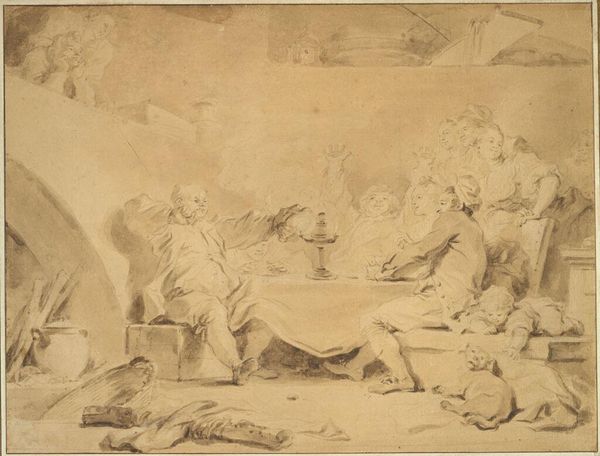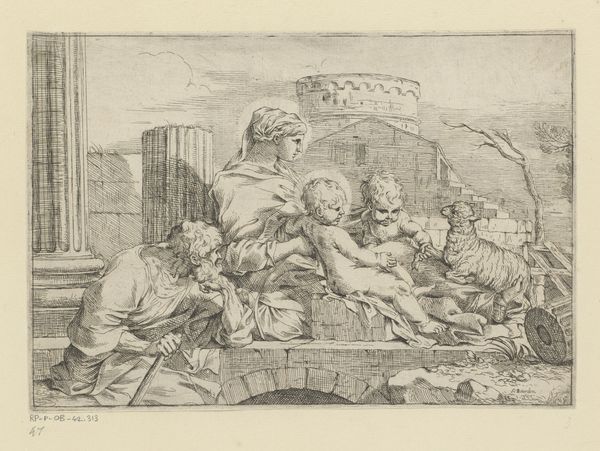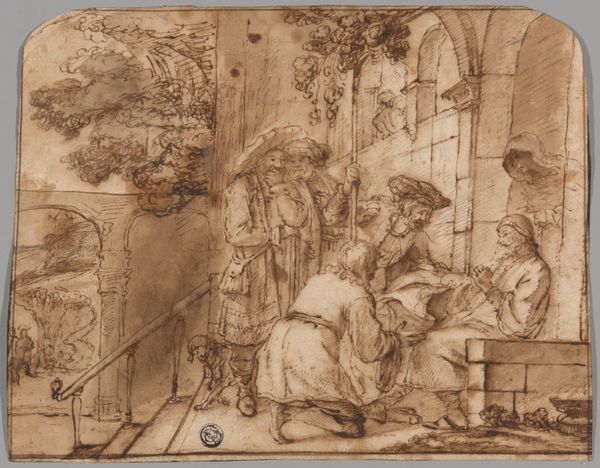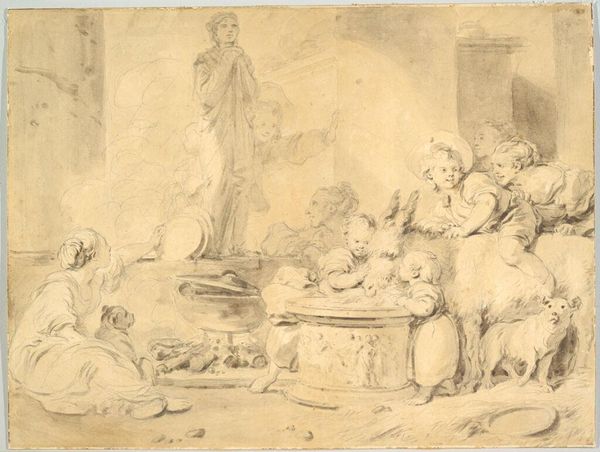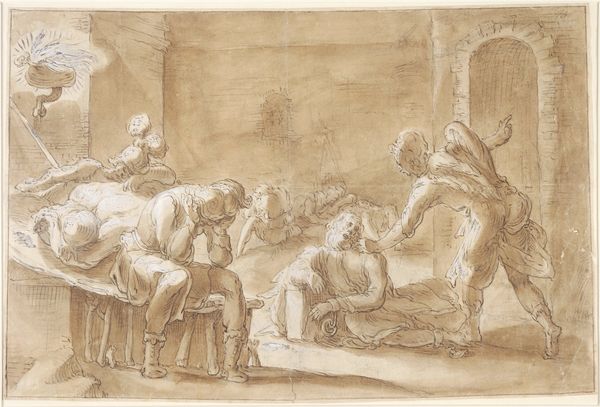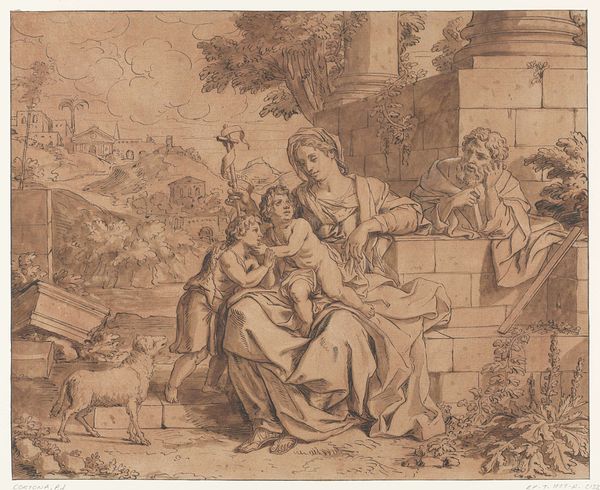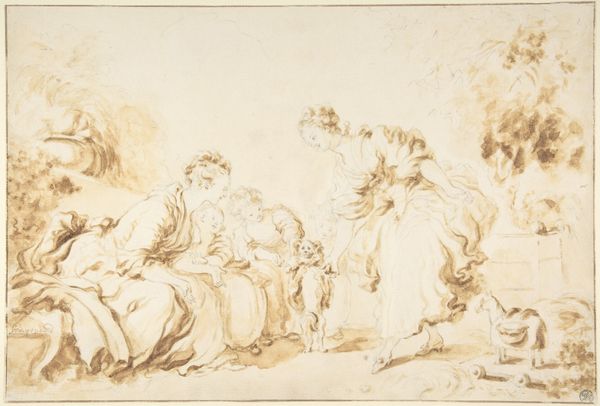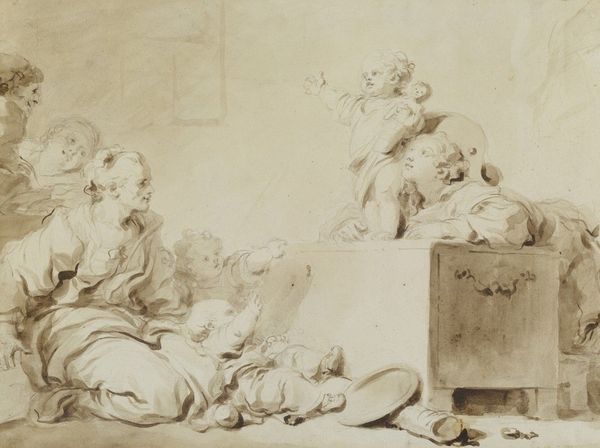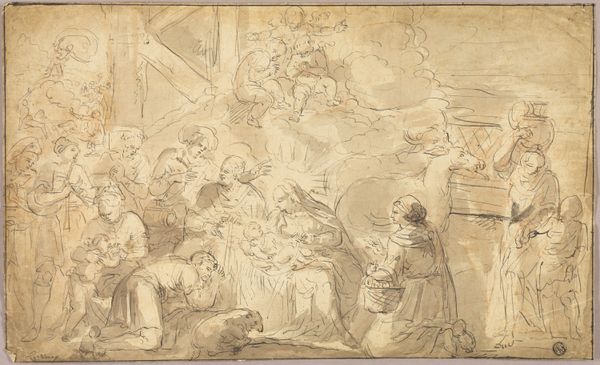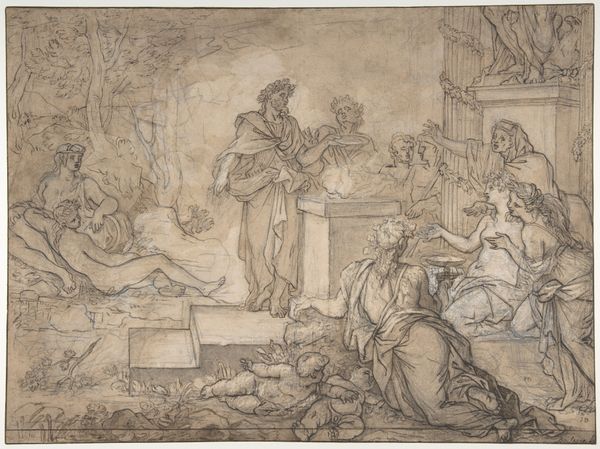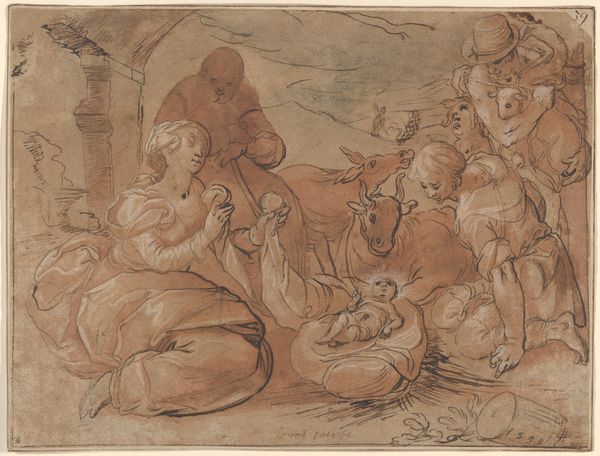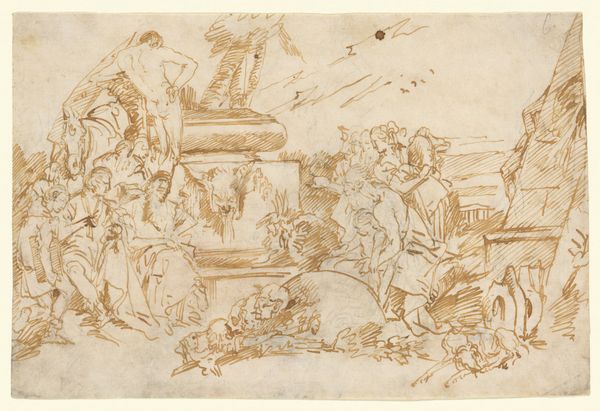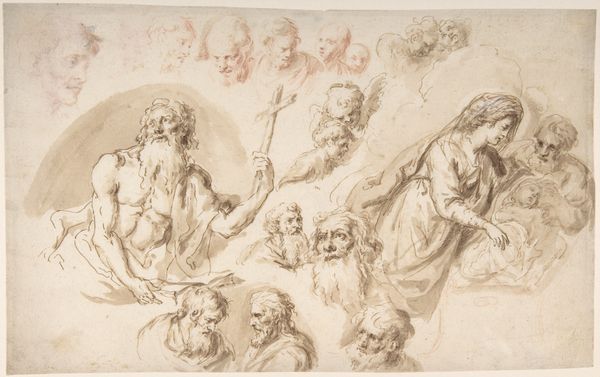
Copyright: Public Domain: Artvee
Curator: What a delightful chaos! My first impression is a cozy warmth emanating from this frenetic scene. The textures alone invite me in. Editor: Indeed. Here we have Jean-Honoré Fragonard's ink and wash drawing, "Making Fritters," created in 1782. Fragonard, of course, is a master of the Rococo, but this glimpse into domestic life reveals a different side of the 18th century. It's far removed from the powdered wigs and aristocratic frivolity that usually come to mind. Curator: Frivolity, yes, but still so theatrical! Look at the composition, how he directs our eye. All that swirling energy around the fritter making, anchored by the watchful dog. It feels like a stage. Editor: It certainly captures the performance of daily life. The image aligns with a broader shift toward valuing sentimental portrayals of ordinary people, reflecting Jean-Jacques Rousseau's influence on the era's intellectual climate and its celebration of motherhood and the innocence of childhood. Curator: "Innocence" while little hands snatch at pastries? More like wonderfully imperfect humanity! It's these details – the dog hoping for a treat, the sheer volume of children! – that create a scene brimming with truth. Editor: Absolutely. The emphasis on genre scenes—everyday moments—allowed artists to both critique and celebrate social values, presenting an idealized yet grounded vision of family life during a time of societal change and growing political awareness. Think about the coming revolution. These glimpses of happy domesticity served a clear, if subtle, purpose. Curator: Hmmm… maybe. But I can't help seeing it also as a tender ode to those moments of unscripted joy amid the potential storm. Thanks for your analysis. It adds another layer to appreciate in this sketch. Editor: My pleasure. It’s those complex readings that continue to draw me to Fragonard. An intimate drawing like this opens to reveal more of its period and its charm.
Comments
No comments
Be the first to comment and join the conversation on the ultimate creative platform.
